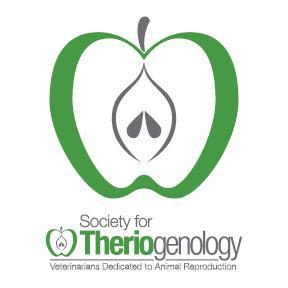Get access to all handy features included in the IVIS website
- Get unlimited access to books, proceedings and journals.
- Get access to a global catalogue of meetings, on-site and online courses, webinars and educational videos.
- Bookmark your favorite articles in My Library for future reading.
- Save future meetings and courses in My Calendar and My e-Learning.
- Ask authors questions and read what others have to say.
Can Serum Amyloid a Predict Reproductive Efficiency in the Postpartum of Mares?
D.G. Howell, C.F. Scoggin and M.A...
Get access to all handy features included in the IVIS website
- Get unlimited access to books, proceedings and journals.
- Get access to a global catalogue of meetings, on-site and online courses, webinars and educational videos.
- Bookmark your favorite articles in My Library for future reading.
- Save future meetings and courses in My Calendar and My e-Learning.
- Ask authors questions and read what others have to say.
Read
Mares are often bred on the first estrus post-partum, termed foal heat (FH), and fertility is usually lower due to multiple factors such as poor uterine involution and chronic inflammation/infection. Serum amyloid A (SAA), an acute phase protein, has been shown to increase within 24 h of foaling followed by a rapid decrease to baseline concentrations by Day 3 postpartum. We hypothesized that concentrations of SAA would remain elevated beyond Day 3 postpartum in mares with uterine inflammation or infection. Moreover, we hypothesized that elevated SAA around the time of breeding would be indicative of impaired uterine involution, resulting in decreased fertility. Objectives were: 1) to determine if SAA concentration on Day 4 postpartum could be used to evaluate uterine involution; and 2) to determine if SAA concentration prior to breeding could predict fertility of mares bred shortly after foaling. Thoroughbred mares were bred on FH (n = 8) or on their second estrus postpartum (Control; n = 13). Mares with uncomplicated foalings occurring prior to April 22 were selected for breeding on their second estrus postpartum, while mares foaling at a later date were selected for FH breeding. Mares were monitored daily and bred once by natural cover while in estrus with good quality semen. All mares were evaluated on Day 4 postpartum and again on the day before breeding. Palpation and ultrasonography per rectum were used to assess uterine/cervical edema, tone, size and fluid accumulation. Endometrial cytology was evaluated and scored based on the average number of neutrophils per high-power field. Endometrial culture was evaluated after 48 h of aerobic incubation for growth of pathogenic bacteria. Blood was collected and serum was separated, frozen, and later evaluated for determination of SAA concentrations at the Acute Phase Laboratory at the University of Miami (Miami, FL). Data were analyzed using Fisher’s Exact Test with significance set at P < 0.05. Overall, SAA concentrations were not correlated with the degree of uterine involution or fertility. On Day 4 postpartum, SAA was elevated (i.e. >50 mg/L) in 3/21 (14%) mares; however, only one mare (5%) had poor uterine involution. Moreover, 15/21 (72%) mares presented moderate to severe cytological evidence of uterine inflammation on the same day. On the day before breeding, SAA was below baseline in all mares in both groups. However, only 6/8 (75%) mares in the FH group had good uterine involution without cytological evidence of uterine inflammation compared to 13/13 (100%) of mares in the control group. Growth of pathogenic bacteria was observed in 16/21 (76%) mares on Day 4 postpartum. On the day before breeding, cultures from 2/8 (25%) FH mares yielded pathogenic bacteria compared to 0/13 mares in the control group. On Day 15 post-ovulation, 2/8 (25%) FH mares and 10/13 (77%) control mares were pregnant. Non-pregnant mares were bred on subsequent cycles and 6/9 became pregnant by the end of the season, indicating adequate fertility of mares in the study. Serum amyloid A was at baseline on Day 4 postpartum in 18/21 (86%) mares and did not correspond with pregnancy outcome. In conclusion, our results indicated that SAA was not a reliable indicator of uterine involution or predictor of fertility in mares.
Get access to all handy features included in the IVIS website
- Get unlimited access to books, proceedings and journals.
- Get access to a global catalogue of meetings, on-site and online courses, webinars and educational videos.
- Bookmark your favorite articles in My Library for future reading.
- Save future meetings and courses in My Calendar and My e-Learning.
- Ask authors questions and read what others have to say.
About
Affiliation of the authors at the time of publication
College of Veterinary Medicine, The Ohio State University, Columbus, OH;
Claiborne Farm, Paris, KY


Comments (0)
Ask the author
0 comments